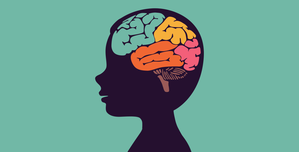New Delhi, Aug 14 (IANS) Researchers have found a brain pathway to activate dormant neural stem cells, offering promising avenues for treating neurodevelopmental disorders like autism, learning disabilities, and cerebral palsy.
The team at Duke-NUS Medical School and the Mechanobiology Institute (MBI) at the National University of Singapore (NUS) in Singapore found that in the adult mammalian brain, most neural stem cells remain dormant until specific signals trigger their activation.
Once activated, these cells produce new neurons, aiding in brain repair and growth. Malfunctions in this activation process are linked to cognitive decline associated with ageing and neurodevelopmental disorders like microcephaly.
Globally, neurodevelopmental disorders affect about five per cent of children and adolescents, impairing cognition, communication, and motor skills.
To explore this activation process, the researchers studied Drosophila or fruit flies. Like mammals, fruit flies’ neural stem cells remain dormant until awakened.
Their findings revealed that astrocytes — glial cells traditionally seen as supportive — play a crucial role in reactivating dormant neural stem cells in fruit fly brains.
Using super-resolution microscopy with 10 times magnification, the team examined the fine fibre structures characteristic of dormant neural stem cells in fruit flies.
These protrusions, about 1.5 micrometre in diameter (20 times smaller than a human hair), are rich in actin filaments, which are assembled by a specific type of formin protein. Variants in formin levels are associated with neurodevelopmental disorders like microcephaly, making this pathway a critical focus.
The researchers discovered that astrocytes release a signalling protein called Folded gastrulation (Fog), which initiates a chain reaction that activates the Formin protein pathway, controlling actin filament movement and reactivating neural stem cells.
The GPCR receptor in neural stem cells responds to Fog, triggering this process. GPCR proteins are vital in many cell processes and are a major target for FDA-approved drugs, comprising 34 per cent of all approved treatments.
Professor Wang Hongyan, the study’s senior author, emphasised that the findings expand understanding of the mechanisms governing neural stem cell reactivation. This discovery of astrocytes as key players in this process open new possibilities for influencing neural stem cell behaviour.
The research team plans to investigate additional signals from astrocytes that may influence neural stem cell activity and explore similar mechanisms in human brain development.
–IANS
ts/rvt/






























